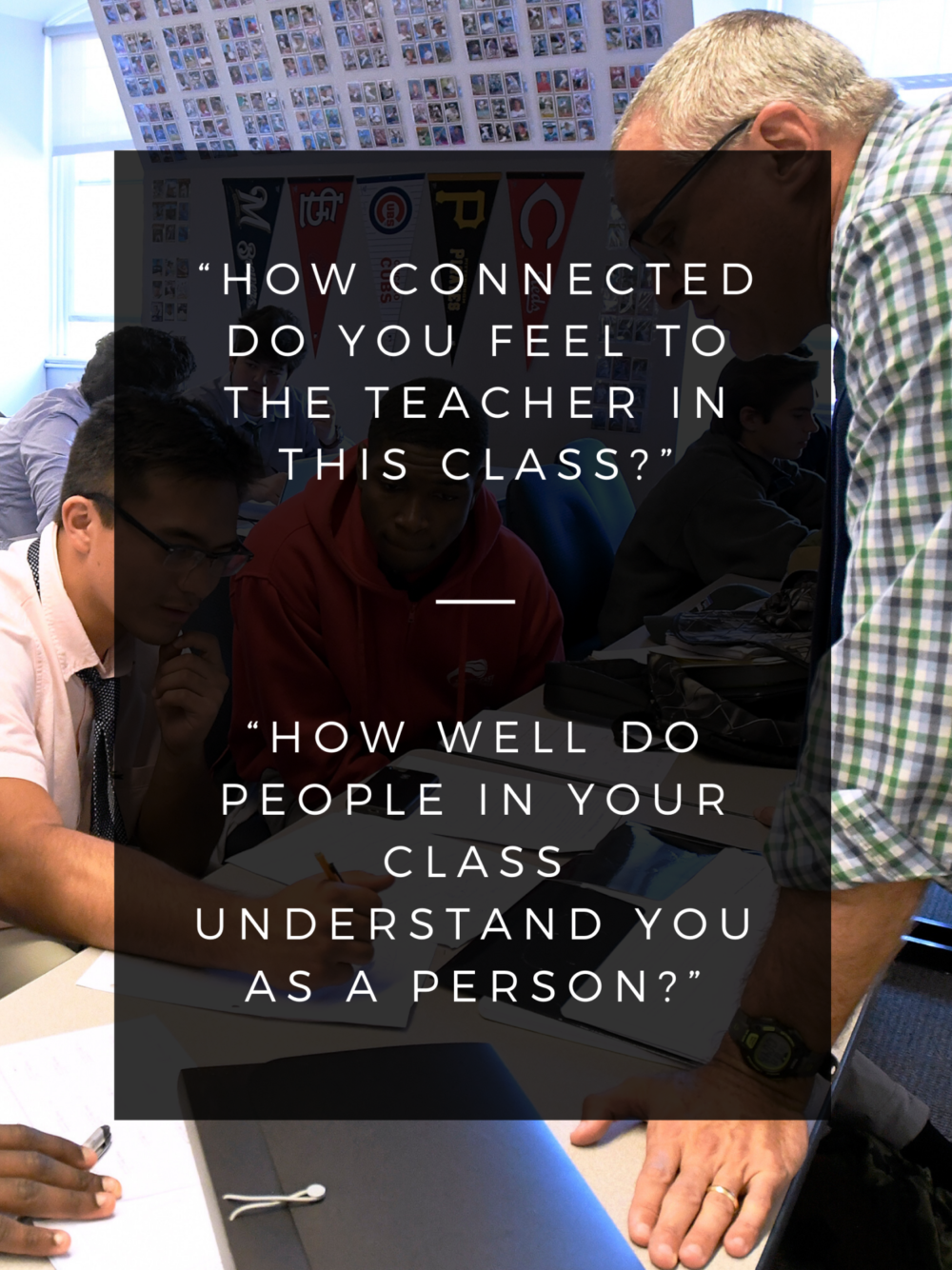Relationships are the Foundation of Online Learning Design. Here’s How We Know.
Online learning has become a prominent part of many teachers’ work, presenting them with new design challenges: how to transfer brick-and-mortar skills to online spaces, how to care for and support students online, and how to ensure effective learning is taking place online. Where should a teacher invest time and energy to support student engagement and learning in online spaces? It’s an important design question, and one thousands of teachers have confronted and will confront amid ongoing discussions about what school will—and should—look like.
After ten years of teaching online and thousands of student surveys, at GOA we believe designing for relationships is the strongest cornerstone on which you can rest your online program. When we started, we only had our intuition and the spirit of our founding schools to make relationships central to our pedagogy. Now, many years of student survey data have helped us refine that approach and design intentionally for relationships.
We survey our students twice per semester. Our surveys have evolved as our program has, but we’ve always rooted student surveys in two critical questions about relationships.

How connected do you feel to the teacher in this class? How well do people in your class understand you as a person?
We, like most educators, value these questions, but our goal was to use data to better understand the impact student responses to these questions had on their overall GOA experience. The way we evaluate the overall student experience, our dependent variable, is a widely used metric known as Net Promoter Score (NPS), or “How likely is it that you would recommend Global Online Academy to another student?”.
This question divides students into “promoters” of GOA (those marking 9 or 10 on a 10-point scale) and “detractors” (those marking 1-6, with 7 and 8 considered to be neutral). We analyze a student’s net promoter score against all of the other survey questions to find correlations within the data. Among most questions (we ask about 20 in total), we cannot find even a moderate correlation among the data. However, there are two questions that consistently and strongly correlate to those students who are “promoters”: the two questions above that speak to relationships.
In essence, students who are GOA promoters are much more likely to report having formed better relationships than detractors. For example, in Semester 1 of the 2019-2020 school year, 40.8% of promoter students said “completely understand” or “understand quite a bit” when asked, “How well do people in your class understand you as a person?” compared to just 9.8% of “detractor” students.
In that same semester, 70.9% of promoter students felt “extremely” or “quite” connected to their teacher compared to just 18.4% of detractors. Of course, students who perceive better relationships are more likely to report having a better experience. However, two details in this data stand out to us. First, the gap between promoters and detractors in these questions is quite wide relative to other questions.
Second, among all of the questions we ask consistently and over time, our two questions on relationships represent the strongest correlation to our NPS metric. We ask about a lot of topics that educators care about and think are important (feedback, teaching style, hours spent on GOA, relevance to one’s life, etc.), but they haven’t mattered as much as relationships. Our questions about relationships are the only two questions that show a statistically significant correlation, and this doesn’t just happen here and there: it has occurred consistently on every survey over time.
Once armed with this data, we wanted to strengthen these relationship metrics, ensuring that as many students as possible knew their teachers, felt known, and thus were more likely to have a positive GOA experience. When our numbers dipped in 2018-2019, the GOA team decided to take a very intentional approach to improve relationships for 2019-2020. The first step was to gather and share our data longitudinally for teachers. This meant collating all historical data and placing it into spreadsheets for teachers to see data trends over time. Previously, teachers had only looked at each survey independently, but through aggregating historical data we were able to observe growth over time. In the future this will allow us (and our faculty themselves) to develop growth plans and professional learning opportunities that were much more individualized.
We then prioritized other metrics that we knew were tied directly to improving relationships in our courses. One of the first was feedback. We knew that effective feedback both depended on and strengthened the student-to-teacher relationship. We also tackled practical items like supportive third party technology tools. While we’ve encouraged the use of Slack and then later Twist, September 2019 was the first time we’ve mandated that all teachers implement a supplemental chat program.
The results in 2019-2020 have been encouraging. Those students reporting that other students in their class understand them “completely” or “quite a bit” rose by 74%. Our metric on feeling connected to the teacher, which had been the stronger metric, also improved: students who reported feeling “extremely” or “quite” connected increased by 28%. Statistically, it’s important to note that we’re not making a causal determination between these two metrics; we're only looking at correlated data and then ranking each question based on the strength of that correlation.
So what does our experience have to offer teachers learning how to design high-quality online experiences? It gives you a clear marker for where to lay the cornerstone of your online program: relationships. Our data and our experience indicate that it's from relationships that quality online education will emanate.
Ready to learn more? Here are five articles from GOA to help you prioritize relationships in online learning design:
- “All That Jazz: Using Feedback to Make Learning Visible”
- “Five Tips for Designing Excellent Video Calls”
- “Making Room for Questions, Play, Creativity, and Community: Setting a Tone for Student Driven Learning”
- “Reflection Routines: The Role of Student Voice in Learning”
- “Six Key Design Elements of Successful Online Learning”
GOA offers high-quality, passion-based online learning experiences for students and educators. Learn more about our Student Program and Professional Learning offerings. While most of our offerings are open to all, GOA member schools have full access to our student course catalog and can enroll in our educators courses for free. Inquire about membership.
